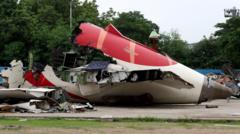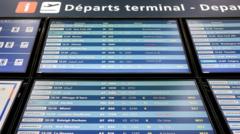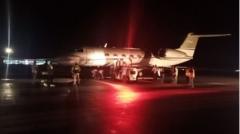The sudden closure of Heathrow Airport on March 21, 2025, resulted in a significant disruption to air travel, affecting hundreds of thousands of passengers and countless flights.
Heathrow Airport Shutdown: The Ripple Effects Across Global Travel

Heathrow Airport Shutdown: The Ripple Effects Across Global Travel
The closure of one of the world's busiest airports leads to mass re-routing and logistical chaos.
London's Heathrow Airport, a major global travel hub, encountered an unexpected shutdown early Friday, prompting dramatic responses across the aviation sector. With approximately 1,300 flights operating daily from more than 80 airlines, the airport is an essential node in international travel, moving nearly six million people and 130,000 tons of cargo monthly.
As the shutdown unfolded, 120 flights had already been en route when the announcement came. While some were able to divert to nearby airports, including Gatwick, Birmingham, and Manchester, many faced further complications. Others ended up in Europe, landing in cities such as Amsterdam and Frankfurt. For instance, a British Airways flight from New York landed in Reykjavik, and a flight from Tokyo was rerouted to Helsinki.
Ian Petchenik, the communications director at Flightradar24, described the entire scenario as a "million moving pieces," reflecting the significant logistical challenge airlines faced in response to the sudden closure. The immediate effects were an avalanche of rebookings and hotel accommodations for affected travelers who were left stranded in various destinations, with many at risk of missing important engagements.
Authorities in London indicated that travel disruptions could extend for several days, affecting hundreds of thousands of passengers and creating a substantial backlog for airlines managing rebookings. The prolonged impact is unprecedented in recent years, with officials drawing comparisons to the widespread flight cancellations seen during the 2010 Icelandic volcanic eruption, which saw over 100,000 flights grounded for days.
Beyond the immediate recovery efforts, the extended closure of such a critical global transit hub promises to have lasting effects on travel schedules and logistics, challenging airlines to adapt quickly in an ever-evolving environment. As the situation develops, travelers and airline operators alike remain on high alert, forced to navigate the complexities of a significantly disrupted aviation landscape.























